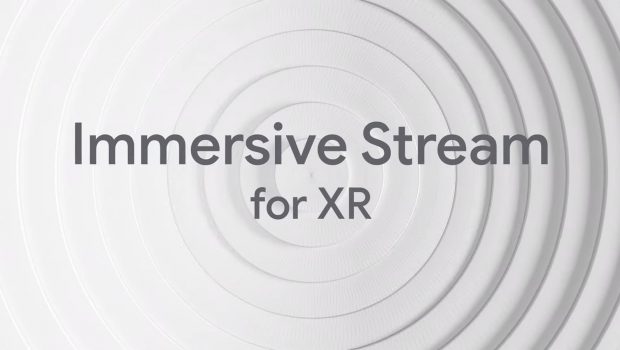Stadia’s technology to be used for immersive AR and VR headset experiences
Google first announced its ‘Immersive Stream’ technology back in March, and since then, the white label B2B solution has been the center of much controversy regarding the consumer-facing version of Stadia. However, the company has made it clear that the new initiative isn’t really new at all, has always been the plan, and does not interfere with the future of your games library. Well, at least not in the immediate future.
A few months later, Google announced that it would be expanding Immersive Stream into XR territory. For those unfamiliar, XR stands for ‘Extended Reality’ and encapsulates both Augmented Reality (AR) and Virtual Reality (VR). That is to say that digital elements both replace and overlay reality. Microsoft calls this ‘Mixed Reality’, for example, but regardless, it’s the next frontier for sure.
You can actually already test XR via Chrome, Android, and iOS, and while it’s still quite early on, the results you can achieve via tests with a headset are promising. The most common use case for it right now is probably shopping. Take a digital 3D model of what you’d like to fit into your home, and drop it to see how its real dimensions work with your living space, for example, and your shopping experience drastically improves.
This past week, Google Cloud hosted a few XR-related streams, and as you can see below, the technology that I’ll again remind you originated with Google Stadia is now being prospected for use with other industries. It would seem that the company hopes to utilize instantaneous cloud-driven experiences via Stadia’s infrastructure to plop educators and students, designers, tourists, healthcare professionals, and more into digital playgrounds to create, play, and work while wearing a headset.

According to rumors, Google is, in fact, working on an Augmented Reality headset for release in 2024 which will be codenamed ‘Project Iris’, have a custom chip (Tensor, perhaps?), and utilize cloud streaming to host the experiences. To me, it truly does sound like Daydream VR had to die so that such a future that spans much further than gaming alone and uses Stadia’s incredible tech to drive the entire thing could come to fruition.
Imagine for a second a Daydream-style XR headset (but much more lightweight) that needed little internal horsepower and just used a Wi-Fi connection to cloud stream any AAA game, industry professional app, and more straight to your eyeballs. While we don’t know much about what the future holds at this point, I’m sure news of ‘Immersive Stream for XR’s future is not far away.
To be absolutely clear, while this technology originated from Stadia’s creation, Stadia itself was not really mentioned in the video, aside from the mention of ‘Augmented Reality Sports’, which could be game related. Other use cases for XR could include more intentional and effective employee training for car repairs, surgeries, and more. If this is sounding a lot like Google Glass (which also went the industry route after a failed consumer experience) mixed with Google Daydream mixed with Google Stadia, then that’s because it probably is.








Gloss